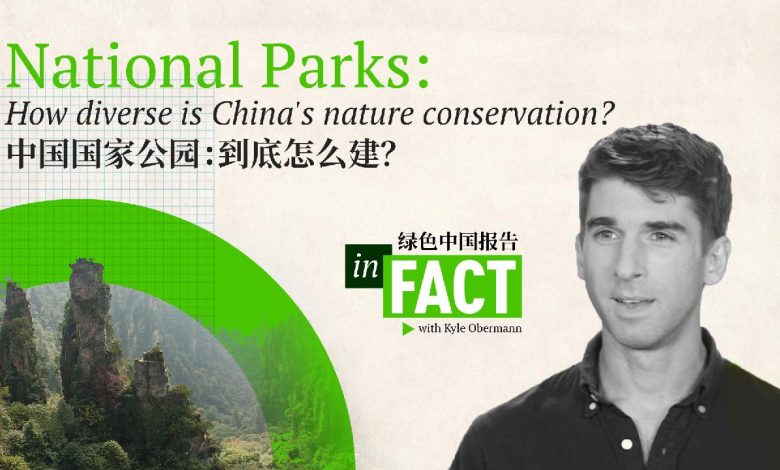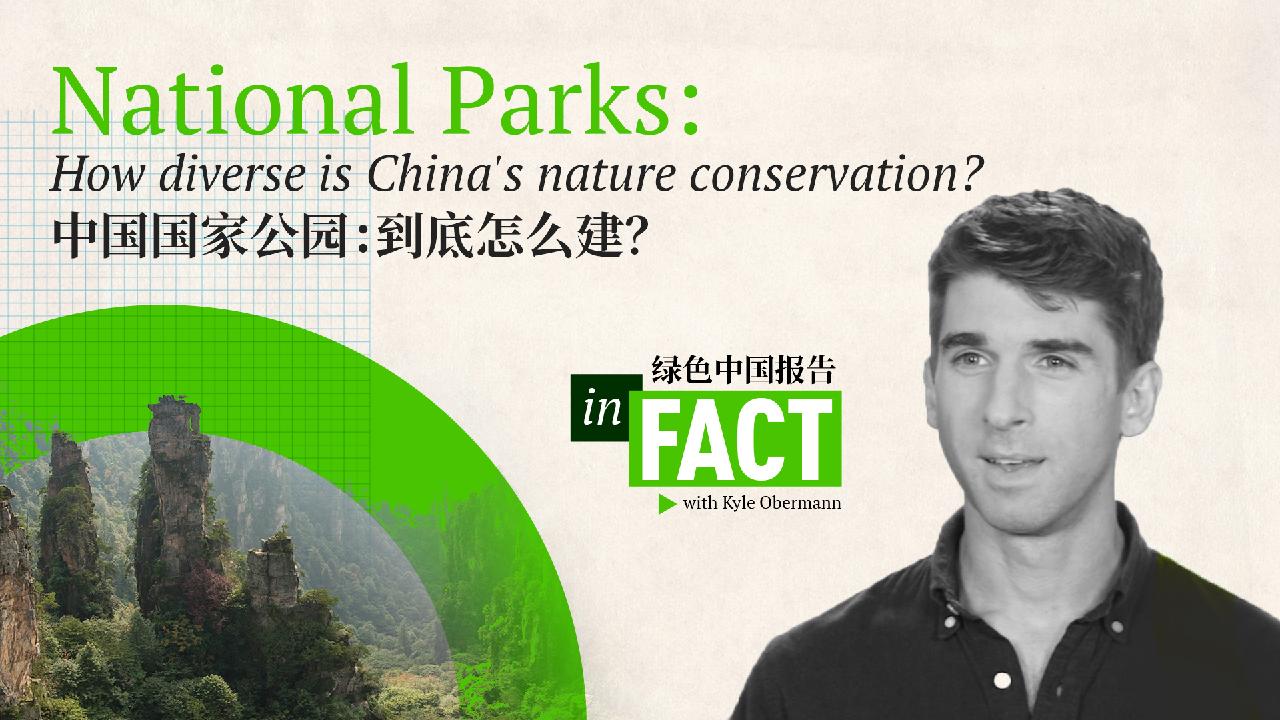In Fact: How diverse is China's nature conservation?


China is a nation of history, metropolis, art, industry, and, the focus of my career and expeditions – the wild: covering 42 percent of the country. In Europe, wilderness covers only 2 percent. But the percentage of wilderness itself doesn’t tell the whole story: What about protection?
In 2021, China announced the creation of the first 5 of 49 planned national parks spanning land and sea. How does a national park function in the world’s formerly most populated nation? Let’s dig into it.
First, let’s establish what’s at stake. China is the world’s 3rd most biodiverse country, just behind Indonesia and Brazil. From expansive deserts in the northwest, some of the world’s tallest mountains in the west, tropical forests to the south, and undulating hills, river valleys, wetlands, and forests covering the expanses of eastern China, an incredible number of ecological biomes cover the country.
For example, China is the only natural home to wild pandas but also to over 60 percent of the world’s snow leopards. Yet species have also been lost: in 2022, the IUCN declared the Yangtze sturgeon and Chinese paddlefish extinct, and last year, the last known female Yangtze giant softshell turtle died.
However, after decades of headlong development followed by a series of natural disasters, the leadership is now aware of the need to protect the environment. Chinese President Xi Jinping is pushing the message of environmental protection from the top via the policy-guiding slogan “lucid waters and lush mountains are invaluable assets” – a mouthful phrase essentially meaning that the environment and economy are inextricably and symbiotically linked – and establishing 2035 as the year that the country will finish the creation of its “nature reserve system centered on national parks”.
<img src='https://newseu.cgtn.com/news/2024-09-30/In-Fact-How-diverse-is-China-s-nature-conservation–1xjX76eAI1i/img/fcec2c8fd3b749da8530e6909171f62b/fcec2c8fd3b749da8530e6909171f62b.jpeg' alt='Kyle Obermann. /CGTN'
By 2018, 62 years after creating its first nature reserve, China had protected 18 percent of its land and 4.6 percent of its water through a network of over 10,000 different types of protected areas. In many places, these actions reversed the fate of endangered species like in 2021 when China declared pandas as no longer endangered. So with this success, why create a new national park system?
The simple answer is that the national park system allows for more efficient and effective, top-down protection of species and habitats across a once fragmented, patchwork system of protected areas.
To again take the panda for example, when the Giant Panda National Park was established in 2021, it grouped over 80 pre-existing, and in some cases overlapping, protected areas across three provinces to create one park. This over-complicated management structure had emerged from the previous sprint to protect different habitats and natural resources post-environmental degradation. But it was due for an update.
So the first five national parks were officially established in 2021 for their biological significance – they cover the habitats of nearly 30% of the country’s key terrestrial species. And, the parks also attempt to help alleviate poverty through ranger employment and local eco-education programs. For example, in Sanjiangyuan National Park, one individual from each household is eligible to be hired as a ranger. But there is an issue that many of the parks and nature reserves still face: the issue of collectively owned land – as opposed to state-owned land – inside national parks. The parks are still working to find a solution to this.
So on this topic – I am frequently asked one question: is China, like other nations have done in the past, forcibly relocating people to build these parks?
China’s national parks are the most densely populated in the world. The original 10 pilot sites had over 600,000 living inside their borders. But, unlike many countries like the USA which eradicated native peoples before creating parks, the government only plans to relocate those living in the core zones of the parks. And while they may not have a choice, all will receive compensation and aid with relocating, finding new housing, new jobs, and more.
<img src='https://newseu.cgtn.com/news/2024-09-30/In-Fact-How-diverse-is-China-s-nature-conservation–1xjX76eAI1i/img/b2c19004a318432eaf16b7f9df499b50/b2c19004a318432eaf16b7f9df499b50.jpeg' alt='Wuyishan National Park. /CGTN'
Okay, so up to this point, we’ve discussed what these parks have brought for nature and fixed, but national parks are different from nature reserves in that they are “public parks” – for people. How do you visit?
For this question, I called my friend, a professional wildlife filmmaker and nature guide who has worked in several of China’s national parks, Hui Ying.
“China’s national parks share many features with national parks around the world,” Hui said. “For instance, they are rich in biodiversity and showcase spectacular geological features. Drawing inspiration from global national parks, China’s parks have incorporated visitor centers.
“During the operational phase of the first five parks, we introduced concessions that allow visitors to appreciate nature without causing harm. These initiatives also promote an understanding of the relationship between local culture and biodiversity. For example, in Sanjiangyuan National Park, eco-tours resemble African safaris. We traveled in off-road vehicles, with local herders acting as our drivers and guides.”
There’s still over a decade to go until China’s national park system is supposed to reach completion. But,China’s built these parks as it has simultaneously tackled poverty, cleaning its air, a pandemic, and more. The first five are now open for people to visit, and more will come soon.
<img src='https://newseu.cgtn.com/news/2024-09-30/In-Fact-How-diverse-is-China-s-nature-conservation–1xjX76eAI1i/img/6178b816ff62457989bdbfe8bddacbec/6178b816ff62457989bdbfe8bddacbec.jpeg' alt='Eco-tours in Sanjiangyuan National Park. /CGTN'
Next Episode: Is smog suffocating China?
<img src='https://newseu.cgtn.com/news/2024-09-30/In-Fact-How-diverse-is-China-s-nature-conservation–1xjX76eAI1i/img/881ac77ade30429c87f28b3d068bfaf8/881ac77ade30429c87f28b3d068bfaf8.jpeg' alt=''

